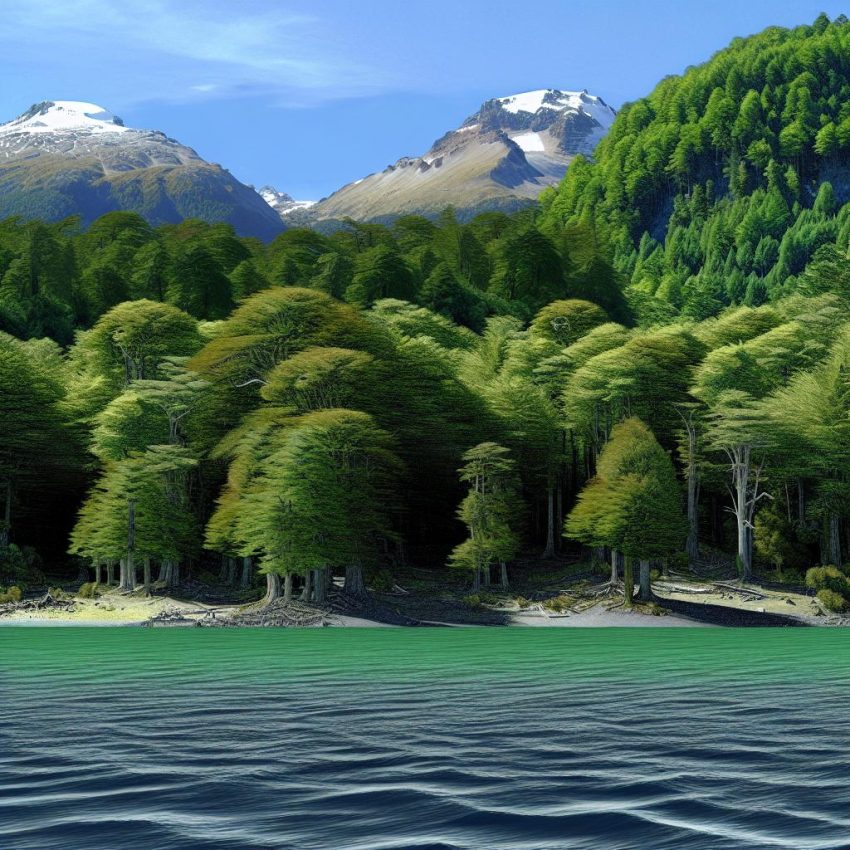Nahuel Huapi National Park Overview
Nahuel Huapi National Park, founded in 1934, holds the distinction of being Argentina’s oldest national park. This park is nestled in the foothills of the Andes Mountains, straddling the provinces of Neuquén and Río Negro. It encompasses approximately 7,050 square kilometers, showcasing the rich natural beauty and diverse ecosystems of the region. The park gets its name from its principal feature, Lake Nahuel Huapi, which is a sublime expanse of glacial waters covering around 557 square kilometers.
Geography and Landscape
The landscape of Nahuel Huapi National Park is a tapestry of geographical diversity. It is marked by a mix of lakes, rivers, valleys, mountainous terrains, and lush forests. Dominating the skyline, the Andes mountains provide a majestic backdrop to this region. These varied natural formations foster numerous microclimates and ecosystems within the park, each contributing to its abundant biodiversity. This geographical diversity not only sustains a wide array of flora and fauna but also offers visitors an ever-changing scenery that continuously delights the senses.
Flora and Fauna
The park is a haven for a diverse range of plant and animal life (flora and fauna). It boasts extensive forests dominated by southern beech trees, notably from the Nothofagus genus, including lenga and coihue trees. The verdant forests provide a crucial habitat for various wildlife species. Among the avian residents, the Andean condor stands out, gracefully soaring over the park. Mammals like the guanaco, a relative of the llama, roam the park alongside the endangered huemul deer, an emblematic species often seen grazing in the meadows. Though elusive, the puma is another significant inhabitant of this region, showcasing the park’s ability to sustain apex predators.
Climate
Nahuel Huapi National Park experiences a temperate climate with variations influenced by altitude and geographical features. Summer temperatures range between 20°C and 25°C, offering pleasant conditions for exploration. In contrast, the winters bring a stark transformation, with temperatures dropping below freezing and snow frequently gracing the higher altitudes. These climatic conditions not only influence the biodiversity but also dictate the types of activities that can be pursued at different times of the year.
Tourism and Activities
Nahuel Huapi National Park is a magnet for tourists who are drawn by its natural beauty and myriad opportunities for outdoor adventures. The park caters to diverse interests through a range of activities including hiking, camping, and mountain biking. Its extensive trails and well-maintained campsites make it a favorite among nature enthusiasts and adventurers alike. During winter months, the park’s terrain offers opportunities for skiing and snowboarding, particularly in areas surrounding the Cerro Catedral ski resort, which holds the reputation of being one of South America’s largest and most developed ski areas.
Hiking Trails
Hiking is immensely popular in the park with trails designed for various levels of expertise. One of the most notable treks is the route leading to Refugio Frey, from which hikers can witness breathtaking panoramic views of the nearby mountains and scintillating lake waters. Other paths meander through dense forests and past serene waterfalls, each offering an opportunity to engage closely with the park’s diverse ecological tapestry, while providing a tranquil yet invigorating experience for visitors.
Water Activities
The expansive Lake Nahuel Huapi and its surrounding water bodies serve as a playground for water activities. Visitors can indulge in kayaking, canoeing, and sailing, making the most of the tranquil waters while enjoying the mesmerizing landscapes. Fishing enthusiasts will find a rewarding experience in the lake, which sees a healthy presence of fish such as trout and salmon. To get a fuller perspective of the lake’s splendor, boating tours are available, guiding visitors between different sections of the lake and its picturesque islands.
Conservation Efforts
As a protected region, Nahuel Huapi National Park is committed to the conservation of its natural resources and cultural heritage. Various initiatives are in place aimed at preserving its unique ecosystems and the rich biodiversity therein. Park authorities work in collaboration with scientists and conservationists to monitor the health and vitality of diverse species and their habitats. Effective management strategies are employed to curtail and manage human impact, ensuring that the park remains a sanctuary for nature and continues to flourish.
Visitor Guidelines
Visitors are integral to the park’s ongoing conservation efforts. It is vital for them to adhere to established guidelines such as staying within marked trails, responsibly disposing of waste, and maintaining a respectful distance from wildlife encounters. Abiding by these recommendations not only enhances the visitor experience but also plays a critical role in preserving the park’s pristine condition for future generations to enjoy and explore.
Further Information
For travelers seeking more in-depth information about Nahuel Huapi National Park, including entry requirements, regulations, and accommodation options, it is advisable to consult official travel and tourism websites like those maintained by Argentina’s National Parks Administration. These resources provide valuable insights and practical tips to help visitors effectively plan their excursions to this remarkable national park.
By understanding and appreciating the objectives behind the conservation initiatives and adhering to visitor guidelines, tourists can contribute to sustained preservation efforts. In doing so, they ensure that Nahuel Huapi National Park remains an unblemished natural wonder, a place of inspiration, education, and awe for generations to come. Through a harmonious balance of exploration and conservation, this splendid landscape continues to offer serene solace and a dynamic adventure to every visitor who walks its trails, sails its waters, or simply marvels at its stunning vistas.

